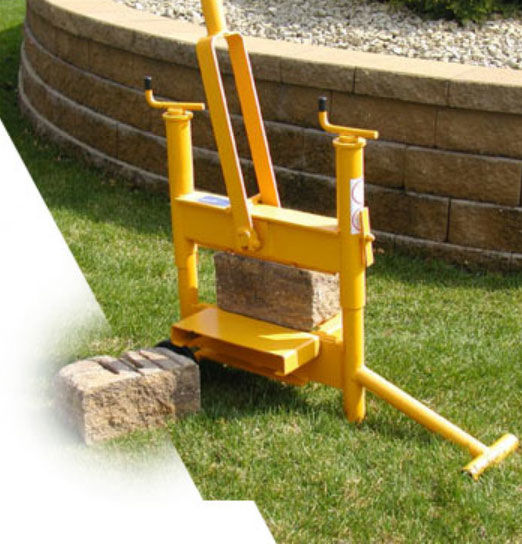Splitting a Standard unit creates an attractive, textured surface that matches the split front face.
Generally, you'll want to split Standard units when the modified portions are visible, such as on a corner or at a step down in the top of the wall.
As a rule of thumb, if you will be able to see a side of a Standard unit, it should be split.
Splitting a Standard unit directly down the middle makes two half-units with textured faces on two sides. These half-units can be used for outside 90° corners or columns.
Splitting the back off a Standard unit gives the unit a textured face on the back that can be used for any section of wall that will be exposed on both the front and back.
There are two ways to split a Standard unit: by hand using a hammer and chisel, or with a mechanical or hydraulic splitter.
Splitting by hand
Hand split units on the ground rather than on a hard surface to create
a better and more accurate split. With a pencil, mark the desired path
of the split on the top, bottom and front of the unit. Using a 2- to
3-inch masonry chisel and heavy hammer, score the unit along that path.
As you score the unit, don’t try to remove material, just create a
fracture path. Then place the unit on its face and strike the unit along
the back
groove. The unit should fracture along the scored path.
Using a Mechanical or Hydraulic Splitter
If a project requires many splits, you might want to use a mechanical or hydraulic splitter (right).
Place the Standard unit in the splitter, line the desired split path
against the top blade, and split. The splitter has a bottom blade that,
when activated, makes a perfect split in seconds. With a splitter, you typically do NOT need to score the unit.

Mechanical Wall-Unit Splitter
